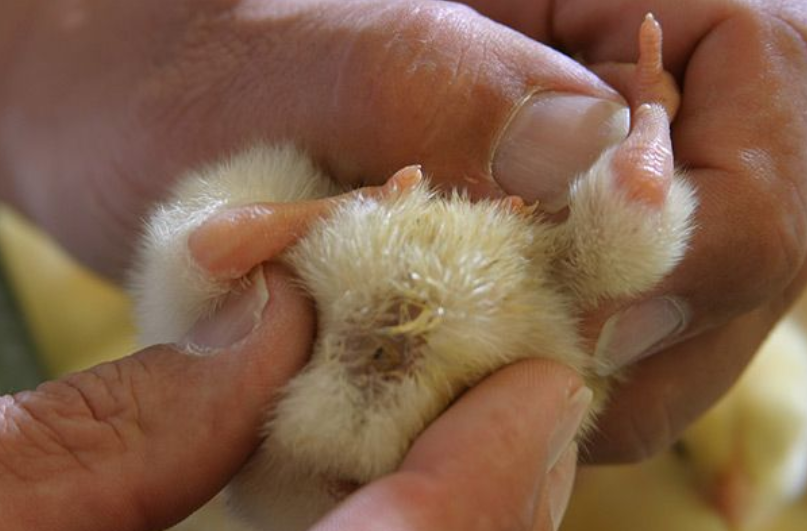



How chick quality is affected by navel development
The hatchery manager takes all possible measures to ensure that incubation results in the highest number of first class chicks. The aim is to have boxes ready for transport to the farm which contain a known number of first class chicks with bright eyes, clean beaks, closed and clean navels, and bellies that feel soft and supple.
Words Dr Marleen Boerjan
The chicks' clean, closed navels are not immediately visible because of the long and shiny down that covers them. It is even possible that in these batches of first class chicken there might be chicks with minor navel problems, for example a small scab (<3mm) of dried blood, or a string of dried yolk stalk. Sticky, wet down is a sign of a leaky, unhealed navel. Chicks with these minor navel problems grow more slowly and broilers have lower weight at slaughter age compared to chicks with a clean and closed navel (Tona et al.,2005; O’Dea and Fasenko, 2007).
How the navel develops
In the embryo the navel (umbilicus) and yolk sac, including the yolk stalk, develop in synchrony with the small intestine and body wall. From embryonic age day 16 to day 19 , the small intestine (umbilical loop) is retracted into the growing body wall leaving, at day 19, a ring-like muscle called the umbilicus (= the future navel). The rhythmic contractions of the umbilicus muscles then draw the large (approx. 5 g) yolk sac into the body cavity leaving a direct connection to the small intestine via the yolk stalk. By day 20 the entire yolk sac has been retracted into the body cavity and the navel closes, with the yolk sac loosely attached to the navel area as part of the internal body wall. Finally, after hatching, the connection between the yolk stalk and the small intestine develops, becoming Meckel's diverticulum: an appendix in the small gut which forms a part of the gut associated immune functions (GALT=Gut-Associated Lymphoid Tissue).
Causes of navel abnormalities
As the description above shows, the retraction of the small intestine followed by the yolk sac and the formation of the final body wall is a synchronised and complex process which can be easily disrupted. Minor navel abnormalities can occur when the small intestine and yolk sac do not develop synchronously. There are a number of possible causes of asynchronous development:
- too high temperatures from day 17
- too high or too low egg weight loss
- eggs from old flocks
- incorrect egg storage conditions (too long or too high temperature)
Longer incubation times as a result of lower incubation temperatures and optimum egg weight loss can be a measure to overcome poor navel quality.
Advice
Depending on hatchery specific protocol, randomly select 500 chicks from hatcher baskets or 500 saleable chicks from the transport boxes.
Determine the number of chicks in the batch with clean and thus healed navels (= excellent quality/first class chicks).
Analyse whether the differences between batches in number of top quality chicks might be attributed to:
- Flock age
- Conditions on the breeder farm
- Incubation program: temperature and/or weight loss
- Storage conditions (length, temperature or heat treatment during storage)
Use your hatchery reference data to compare the outcome of the analysis. If necessary, take action to reduce the number of chicks with minor navel problems.
Be aware that hens’ reproduction physiology changes as they age. Optimum breeder management can reduce the ageing influence on egg and chick quality.









